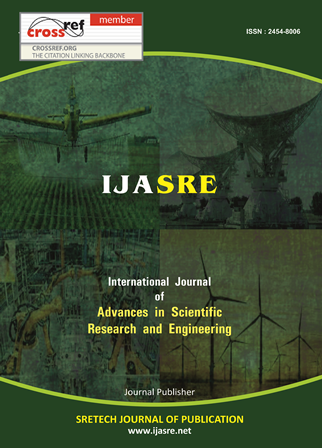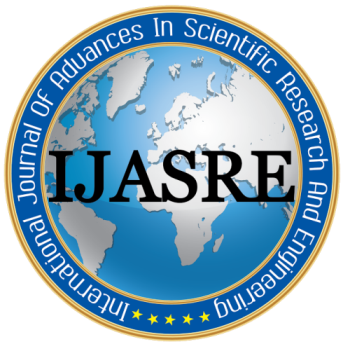Experimental Investigation of Microstructure and Phase Characterization of Rice Hush Ash (RHA) for Potential Utilization in Metal Matrix Composites
DOI:
https://doi.org/10.31695/IJASRE.2023.9.5.4Keywords:
X-Ray fluorescence, Scanning electron microscopy, Electron dispersive spectroscopy, X-Ray diffraction, AluminaAbstract
Recent trends in material research and development of composite materials are geared towards reducing cost, recycling and ensuring environmental sustainability. Agricultural waste derivatives have proven to be an alternative or complimentary reinforcement material in the development of metal matrix composites. The current work is an investigation of the microstructure and phase characterization of rice husk ash (RHA) obtained through open air burning. Scanning electron microscopy (SEM) equipped with electron dispersive spectrometry (EDS) was used for the microstructural examination, X – ray fluorescence (XRF) for the mineralogical composition and X – ray diffraction (XRD) for the determination of phases present. Results revealed that RHA is highly siliceous with 93.8% SiO2, highly porous and fibrous material with a wide surface area. EDS profile confirmed the presence of SiO2 and Al2O3. The XRD pattern revealed the presence of quartz, crystabalite and anorthite phases in the RHA. Silica is a hard substance with strong covalent bonds similar to diamond with hardness rating of 7 on Mohs scale and melting point of 1713OC. Thus RHA can be suitable used as a reinforcing material in the development of metal matrix composites for automotive components.
Downloads
How to Cite
Issue
Section
License
Copyright (c) 2023 Mangai M. M, Aje Tokan, Mohammed Bawa, Nicodemus Datau

This work is licensed under a Creative Commons Attribution-NonCommercial 4.0 International License.








